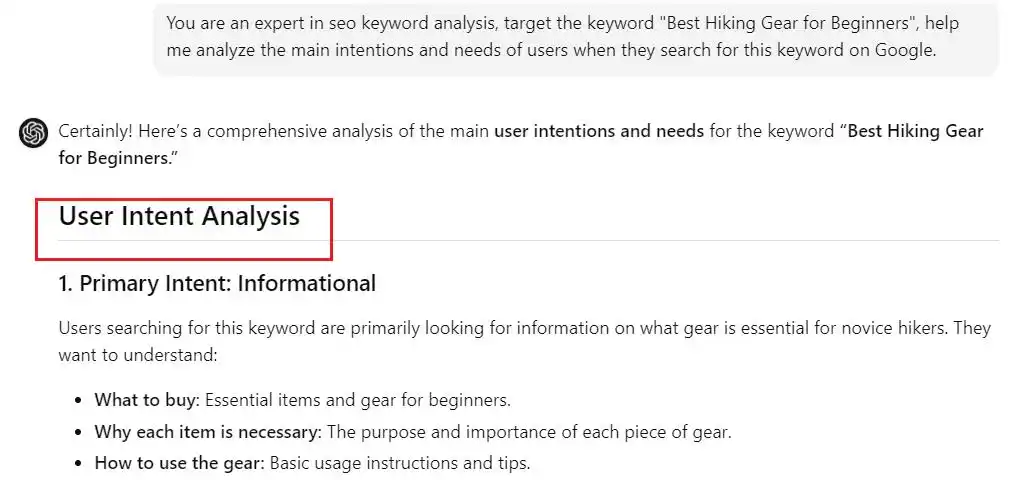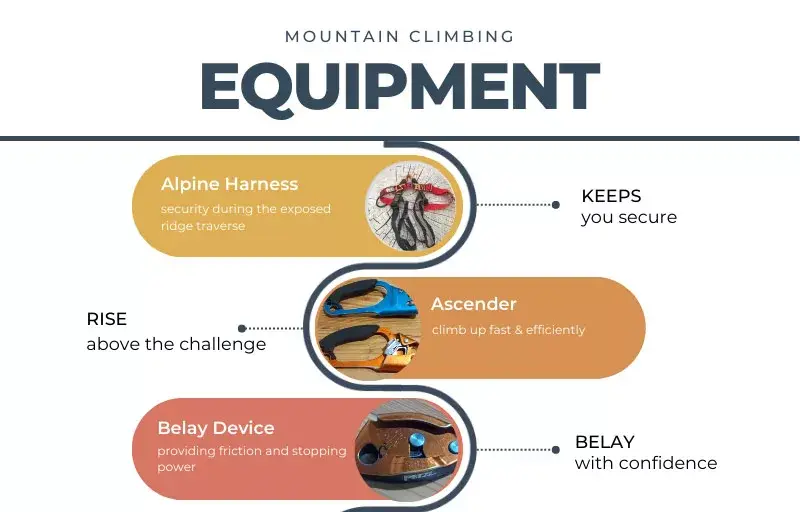Opening
Hey, friend! 👋
Have you ever wondered why your website always lingers on the second page of search results?
I was in the same boat until I discovered a secret weapon: artificial intelligence!
Yes, you heard that right. AI is not just a toy for tech companies; it can actually transform the way you create content completely.

If you want to break through the bottleneck and improve your website’s SEO performance, you definitely can’t miss the following content.
I’ve prepared six simple and practical steps to teach you how to use AI to reach the peak of content creation.
Let’s explore this exciting journey together and embark on your path of AI content creation! 🚀

Ⅰ. Why AI is Your Secret Weapon for Content Creation
When it comes to content creation, I have to be honest: In the past, my creative process was simply a “manual battle.”
Every day, I was like a lonely knight, typing on the keyboard and fighting alone against a bunch of keywords and search intent.
As an SEO content creator, my goal was very clear: to write articles that could both attract users and make Google fall in love with them.

But the reality was that writing such articles required a great deal of time and energy, yet the results were often frustrating.
A Real-Life Example of the Struggle
Once, I wrote an article for a client about “Best Hiking Gear for Beginners.”
To ensure the content could rank high, I spent a full two days manually studying keywords, analyzing user intentions with SEO tools, and exploring competitors’ content strategies.

Then, I designed a content framework to make the article logically clear and information-rich.
Finally, I spent countless hours writing, optimizing the language style, and ensuring the content was both professional and readable.
But the result? Ranking never improved, and traffic was pitifully low.
Worse still, my client suggested modifying the tone of the article because it sounded “too technical” and wasn’t close enough to beginners.

At that moment, I felt completely devastated. I had put in so much effort, so why was the result still so unsatisfactory?
How AI Changed Everything
Then, AI tools changed my entire creative process. Let me tell you how I did it.
When I started using ChatGPT, I typed the target keyword “Best Hiking Gear for Beginners” and asked about the main intentions and needs users might have when searching for that keyword.

Within seconds, ChatGPT listed questions users might be concerned about, such as:
- What to buy: Essential items and gear for beginners.
- Why each item is necessary: The purpose and importance of each piece of gear.
- How to use the gear: Basic usage instructions and tips.

This not only enabled me to quickly clarify the direction of my creation but also allowed me to truly understand the needs of users.
Creating a Content Framework
I used ChatGPT to generate a content outline. It helped me design a logically clear framework, such as:
- Equipment List for Beginners
- Purchase Suggestions

Each part closely adhered to user search intent.
Even better, ChatGPT suggested I incorporate practical tips, like:
- “How to choose the best equipment within a budget”
Generating the Article Content
Next, I generated the article content paragraph by paragraph using ChatGPT.
For example, in the section “Hiking Shoes: When to Choose Shoes Over Boots,” I asked ChatGPT to focus on:
- Differences between shoes and boots
- Recommendations for different travel scenarios

The content it generated was rich in information, aligned with users’ language habits, and natural and easy to read.
Refining the Content
Of course, the first draft wasn’t the final result. To make the article more professional and attractive, I handed over the draft to Claude for further optimization.
Claude’s strengths include:
- Reorganizing paragraphs for smoother information flow
- Refining tone while keeping it professional and easy to read

For instance, when explaining complex concepts, Claude added light-hearted and humorous examples, making the content resonate with beginners.
Adding Visual Appeal
Finally, I used Canva to design an infographic to present the “List of Essential Mountaineering Equipment for Beginners.”
This chart enhanced the visual appeal of the article and increased user dwell time, as readers spent more time exploring the details.

Results That Speak for Themselves
How was the result?
- The article jumped to the first page within two weeks.
- On March 14th alone, it received 947 views.
- User engagement significantly increased, with 24 conversions.

My client was full of praise for this article and even asked me to create content for their other product lines.
AI: The True Secret Weapon for Content Creation
This experience made me fully understand that AI is not just a simple tool; it is a true “secret weapon” for content creation.
AI can perfectly solve the problems of content creation. And even better, it’s not complicated.

Next Steps
Keep reading. Later on, I will share 6 simple steps to help you get started easily and ensure that your article not only ranks high but also truly touches users.
II. 6 AI-Powered Steps to Mastering Content Creation
Now that you know the power of AI, let’s break down the exact process I follow to create SEO-friendly content that ranks high and engages readers.
These steps will guide you through every stage of content creation, from research to publishing.

Step 1: Analyze User Needs & Search Intent 🎯
Every great article starts with understanding what your audience wants.
If you miss this step, even the best-written content won’t perform well. Here’s how I do it using ChatGPT:
Example:
“Target Keyword—“best running shoes for beginners”
Ask ChatGPT to analyze the keyword:
- Input: “What are users searching for when they use the keyword ‘best running shoes for beginners’? Break it down by intent.”
From the output results, we know that the primary intention of this keyword is the information intention.
So we can write from the following perspectives:
1. Buying Guide
Characteristics of Beginner Running Shoes: Write a detailed article outlining the key factors that beginners should consider when choosing running shoes, such as cushioning, support, weight, and comfort.

2. Comparison Article
Price Comparison: Analyze the prices of various running shoes and their value for money, assisting users in finding options that fit their budget.
Step 2: Build a Strategic Content Framework
Content without structure is just chaos. ChatGPT is my go-to for creating a clear outline, and Claude ensures everything flows seamlessly.
Example: Product Comparison Blog
Generate an Outline with ChatGPT:
- Input: “Create an outline for a blog comparing the top 5 running shoes for beginners….”

Refine with Claude:
- Claude ensures smooth transitions and eliminates redundancies.

Step 3: Generate & Optimize Content ✍️
Claude shines when it comes to crafting polished, SEO-friendly content.
Example: Writing a Review Section
Draft with ChatGPT:
- Input:
- “Based on the outline I gave you, write down the specific content of each part. Requirements: It should be practical for users, give appropriate vivid examples, use plain and understandable language, and meet the needs of the target customers”

Optimize with Claude:
- Adjust tone for beginners.
- Add comparisons to similar products for added value.

Step 4: Enhance Professionalism & Readability
Great content isn’t just about keywords—it’s about readability. If your audience can’t skim your article easily, they’ll bounce faster than you can say “Google Analytics.”

Example: Improving Readability
- Simplify Language with Claude:
- Input your draft and ask Claude to simplify complex sentences.
- Example: Instead of “The Revolution 6 provides exceptional lateral support for novice runners,” Claude might simplify it to “The Revolution 6 offers great side support, perfect for beginners.”
- Break Up Text:
- Use claude to suggest where to add bullet points or subheadings.
- Example: Turn a dense paragraph about shoe features into a bulleted list:
- Lightweight design.
- Soft cushioning for comfort.
- Durable outsole for long-lasting wear.
Pro Tip: You can have claude play the role of a content optimization expert and write your optimization requirements in sufficient detail
Step 5: Optimize Structure & Formatting for SEO 🛠
Google loves well-organized content. ChatGPT can help you fine-tune your article’s structure for maximum SEO impact.
Example: Structuring a Blog Post
You can enter the following instructions in chatgpt:

neo’s Insights:The layout of the article is still quite simple. Just put forward your requirements in natural language.
Step 6: Add Visuals to Boost Engagement 🎨
Let’s face it—walls of text can be boring. Visuals make your content pop and keep readers engaged. Canva is my secret weapon.

Example: Creating Infographics
- Design with Canva:
- Create an infographic comparing the top 5 running shoes. Include features like price, weight, and cushioning.
- Embed Multimedia:
- Use product images with alt text optimized for SEO.
- Add a “shoe selection flowchart” to guide beginners to the right choice.
Pro Tip: Use Canva templates to create Pinterest-friendly graphics. They’re great for driving traffic from social media to your blog.
Neo’s latest AI-based content creation experience
As for the current AI tools for content creation, I think chatgpt 4.5(good at writing) and claude 3.7 are good choices.
In fact, it’s not necessary for everyone to know every AI, nor is it necessary to test every AI.
Using one or two top-level tools is the best solution.
What might be more important lies in your own control over the topic selection and outline of the content.

Another key point is the effect of your conversation with the AI tool, that is to say, the prompt words determine the quality of the AI-generated content.
I hope my experiences have provided valuable insights . Let’s continue to learn and innovate together!

